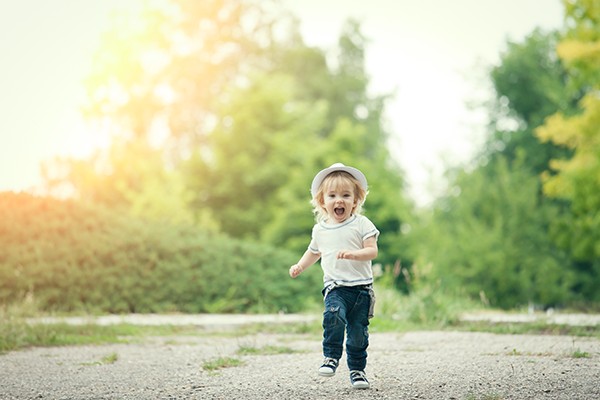Understanding your 3-year-old’s developmental milestones is crucial for supporting their growth and learning. This article explores the key skills and abilities children typically develop by age three, offering insights into their physical, cognitive, and social-emotional progress. We’ll also provide practical tips and activities to enhance their learning journey.
Physical Development: Growing and Exploring
Three-year-olds are bundles of energy, constantly on the move. Their physical growth might be slower compared to infancy, but significant developments are happening. Expect an average weight gain of 4 to 6 pounds and a height increase of 2 to 3 inches per year. Keep in mind that growth varies among children, and consistency in their own growth pattern is key.
Typical physical milestones for 3-year-olds:
- Running and jumping with ease
- Walking upstairs without assistance
- Riding a tricycle
- Washing and drying hands
- Stacking 10 blocks
- Standing on tiptoes
Promoting physical development:
The American Academy of Pediatrics recommends at least 60 minutes of unstructured play and 30 minutes of structured physical activity daily for this age group. Encourage activities like:
- Running, jumping, and climbing
- Playing with balls: throwing, catching, kicking
- Riding tricycles or scooters
- Dancing to music
- Engaging in imaginative play like pretending to be animals
Language and Communication: Talking, Understanding, and Expressing
By age three, children’s language skills are blossoming. Their vocabulary expands rapidly, and they start forming more complex sentences. While individual progress varies, most 3-year-olds can:
- Speak 500 to 900 words
- Be understood by others
- Use sentences with four to five words
- Remember simple rhymes and songs
- Use “please” and “thank you”
- Refer to themselves by name
- Name colors
Cognitive Development: Thinking, Learning, and Problem-Solving
Three-year-olds are curious explorers, eager to learn about the world around them. They are developing important cognitive skills, including:
- Understanding size differences (big and little)
- Grasping the concept of past tense (yesterday)
- Comprehending longer sentences
- Understanding prepositions (on, under, behind)
- Using pronouns correctly (I, you, he, me)
- Asking “why” frequently
- Counting up to four objects
- Saying their full name and age
- Attempting to solve problems
- Remembering certain events
Social and Emotional Development: Interacting, Sharing, and Expressing Emotions
Social and emotional development is crucial at this age. Three-year-olds are learning to interact with others, manage their emotions, and develop a sense of self. Observe for these milestones:
- Sharing toys and playing with other children
- Taking turns
- Showing fewer temper tantrums
- Expressing feelings in socially acceptable ways
Supporting social-emotional growth:
- Provide opportunities for social interaction with peers.
- Model positive social behaviors.
- Encourage sharing, cooperation, and empathy.
- Help them label and understand their emotions.
- Provide a safe and supportive environment for emotional expression.
Fostering Learning and Development at Home
Parents and caregivers play a vital role in supporting a 3-year-old’s learning and development. Here are some engaging activities:
- Reading together: Choose age-appropriate books with colorful illustrations.
- Singing songs and nursery rhymes: This helps with language development and memory.
- Arts and crafts: Encourage creativity with drawing, painting, and playdough.
- Building with blocks: This fosters spatial reasoning and problem-solving skills.
- Pretend play: Encourage imaginative play with dolls, cars, or dress-up clothes.
- Simple chores: Involving them in age-appropriate chores promotes responsibility.
Sleep and Nutrition: Supporting Growth and Well-being
Adequate sleep and nutrition are essential for a 3-year-old’s overall development. They typically need 11 to 13 hours of sleep per day, including a possible nap. Establish a consistent bedtime routine to promote healthy sleep habits. Offer a balanced diet with a variety of nutritious foods.
Reviewed by Dr. Toya Tillis, Pomona Pediatrics, CHOC Primary Care – June 2021

